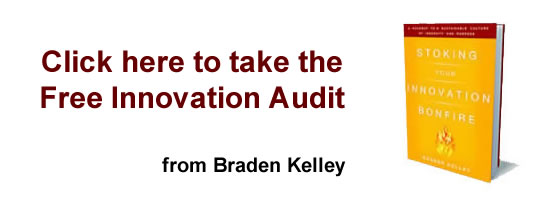Here’s How Investors Are Adapting To The New Era Of Innovation

In recent decades, innovation has become almost synonymous with digital technology. That wasn’t always true, of course. Long before the microchip was invented, we built an industrial economy based on electricity and internal combustion, harnessed the power of the atom and developed life-saving cures.
Nevertheless, lately everything seems to be digital. Entrepreneurs who create software apps and consumer gadgets can find themselves zillionaires in a matter of just a few years — or even a matter of months. Investors, not surprisingly, search far and wide to find the next Facebook or Google.
Today, however, we are entering a new era of innovation. The basic technology that powered the digital revolution is nearing its theoretical limits and the most exciting opportunities lie in new technologies. Many of these will be rooted in the physical world, as we learn to use bits to transform atoms. Some investors are already making the shift to a new model.
Mitigating Technical Risk
The  military buildup after World War II brought massive investment to northern California. Bright young engineers migrated in droves to take advantage of good paying jobs and a significant portion of them ended up starting their own companies. Some got rich and began to invest in other engineers. That’s how the modern venture capital industry was born.
However, and this is a crucial point, the Silicon Valley model is, perhaps not surprisingly, largely geared to technologies developed in Silicon Valley. That has been key to its success. Because technical factors are well understood, risk is limited to whether there is a market for the product, the strength of the competition and the talents of the entrepreneurial team.
“The [traditional] venture capital model works well when the primary risk is finance risk — as the entrepreneurial team works to scale their business model —  but it’s doesn’t work so well when technological risk and market risk coincide,†Errol Arkilic, an investor that specializes in hard tech ventures told me. “There are just too many unknowns and that requires a different approach.â€
However, there is a growing trend of early seed investors who focus on mitigating specific areas of technical risk. They offer entrepreneurs more than capital, but also lab space, scientific expertise and business mentorship. “This is part of a general trend toward specialization in venture,†Scott Lenet, President of Touchdown Ventures told me. “If you’re not building a specific advantage, you might be speculating, not investing.â€
Arvind Gupta, Founder of IndieBio, believes there is real opportunity in flipping the traditional VC model. “We are taking technical risk, not market risk. For example, one of our companies, Prellis, is 3D printing organs. We know there’s a market for that. The question is whether you can make it work. So we focus on mitigating that kind of risk,†he says.
An Evolving Ecosystem
When the founders at Opus 12, a clean tech startup that invented a process for converting carbon emissions into useful chemicals, began looking for investors in 2011, they found little interest. Almost by chance, they were introduced to Cyclotron Road, a new program at Lawrence Berkeley National Laboratory specifically geared to entrepreneurs like them.
Since then, the Department of Energy has established two more such centers, Chain Reaction at Argonne and Innovation Crossroads at Oak Ridge. Yet when I sat down earlier this year with the newest cohort at Oak Ridge, their experience was decidedly different than Opus 12’s. Rather than stumbling over the program by chance, every single one had come through a feeder program. That’s an enormous shift in just seven years.
Another key part of the ecosystem that’s emerging is universities. Traditionally, they have tried to commercialize discoveries in their labs through traditional technology transfer programs. More recently, however, they have shifted their focus to helping scientists become entrepreneurs themselves.
“From a university perspective, we’re seeing a huge demand from students for more entrepreneurial resources. So things have shifted very quickly in the last five or six years to meet that demand, providing mentorship programs, partnering with companies and setting up incubators with affiliate venture funds,†says Regis Kelly, Executive Director at QB3.
Weaving A Network Of Deep Expertise
One of the things I heard constantly from investors who focus on so called “hard tech†companies that seek to commercialize scientific discoveries is how important the human element is. Unlike digital startups, the expertise they need to make decisions is not centered in Silicon Valley, but widely distributed at a number of universities and research centers as well as a small cadre of entrepreneurs that previously built hard tech startups.
“This is a very ‘high touch’ business,†Conrad Burke, who heads up the ISF Incubator told me. “You’re not going to find the talent you need online. You have to constantly get out there, attend events, meet people one-on-one and constantly network to build the relationships that will enable you to make sound decisions.â€
Kate McAndrew, a Principal at Bolt.io agrees. “There are plenty of places to get cheap money. Those who want to play in the seed space need to offer something over and above capital. You need to be ready to help entrepreneurs build real businesses,†she says. She also pointed out that the more entrepreneurs they help become successful, the bigger her firm’s network of expertise becomes.
Touchdown’s Scott Lenet believes that the rising sophistication of seed and pre-seed investors makes it incumbent on more traditional investors to reach out. “Increasingly, good VCs are developing relationships in the ecosystems where they want to specialize, including incubators, accelerators, university entrepreneurship programs and corporations with the scientific expertise to help source and validate deals.â€
Think Globally, Act Locally
One key difference between the digital era and the new era of innovation that is now emerging is that, while the digital revolution was largely a national phenomenon centered in the Bay Area and a few other places, this new era will be considerably more regional. So we can expect state and local governments and institutions to play a much larger role.
For example, I visited a facility in Detroit funded by the state government, Michigan State University and the automobile industry in partnership with two manufacturing hubs, one focused on composite materials and the other on lightweight metals. Because of the auto industry’s importance to the local economy, the investment makes good economic sense.
Over the past five or six years, similar facilities seem to be popping up everywhere. The Delaware Innovation Space, located at DuPont’s legendary Experimental Station, offers 100,000 square feet of multi-use lab space for local entrepreneurs. UI Labs and mHub in Chicago support manufacturing based startups. The list goes on and it’s growing quickly.
Over the last few decades, the Silicon Valley model of venture-funded entrepreneurship has been extraordinarily successful. So successful, in fact, that we often forget that there’s any other way to fund startups. As the digital era comes to an end, we need to get beyond the Silicon Valley myth and learn to adapt to a new era of innovation.
An earlier version of this article first appeared in Inc.com
Image: Pixabay
Wait! Before you go…
Choose how you want the latest innovation content delivered to you:
- Daily — RSS Feed — Email — Twitter — Facebook — Linkedin Today
- Weekly — Email Newsletter — Free Magazine — Linkedin Group
 Greg Satell is a popular author, keynote speaker, and trusted adviser whose new book, Cascades: How to Create a Movement that Drives Transformational Change, will be published by McGraw-Hill in April, 2019. His previous effort, Mapping Innovation, was selected as one of the best business books of 2017. You can learn more about Greg on his website, GregSatell.com and follow him on Twitter @DigitalTonto.
Greg Satell is a popular author, keynote speaker, and trusted adviser whose new book, Cascades: How to Create a Movement that Drives Transformational Change, will be published by McGraw-Hill in April, 2019. His previous effort, Mapping Innovation, was selected as one of the best business books of 2017. You can learn more about Greg on his website, GregSatell.com and follow him on Twitter @DigitalTonto.
NEVER MISS ANOTHER NEWSLETTER!
LATEST BLOGS
Three things you didn’t know about credit cards
Photo by Ales Nesetril on Unsplash Many of us use credit cards regularly. From using them for everyday purchases to…
Read MoreFive CV skills of a business-minded individual
Photo by Scott Graham on Unsplash The skills listed on a CV help employers quickly understand your suitability for a…
Read More


